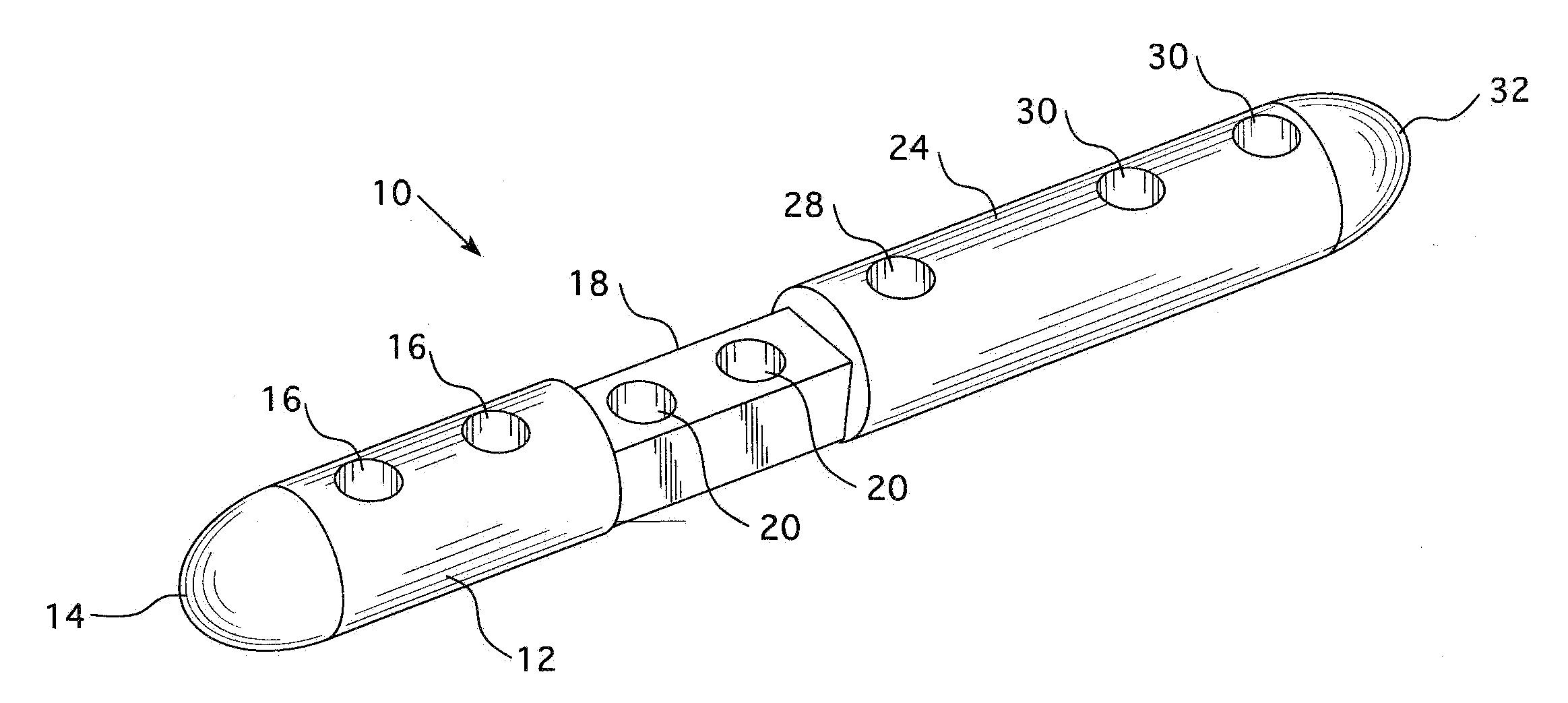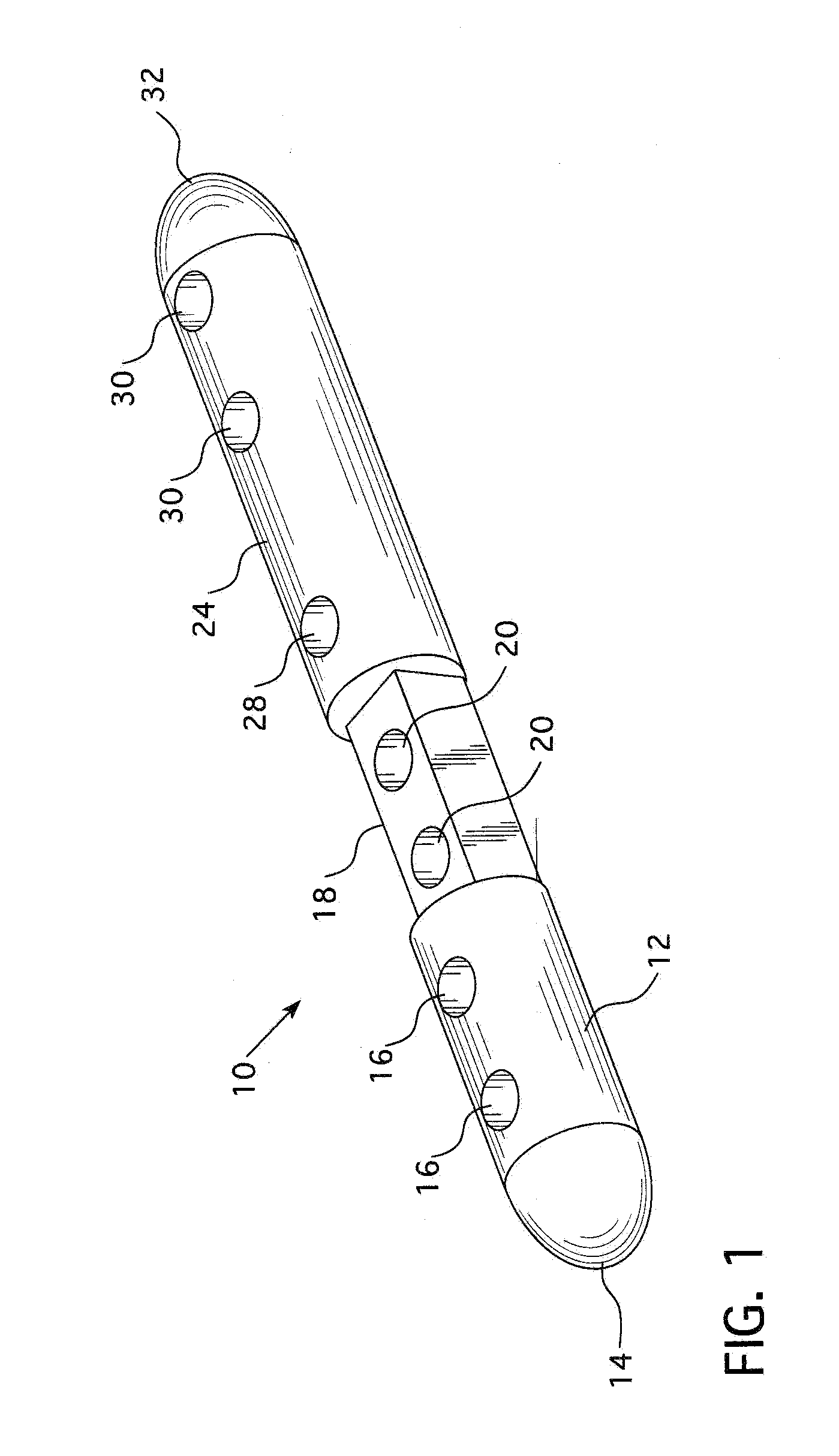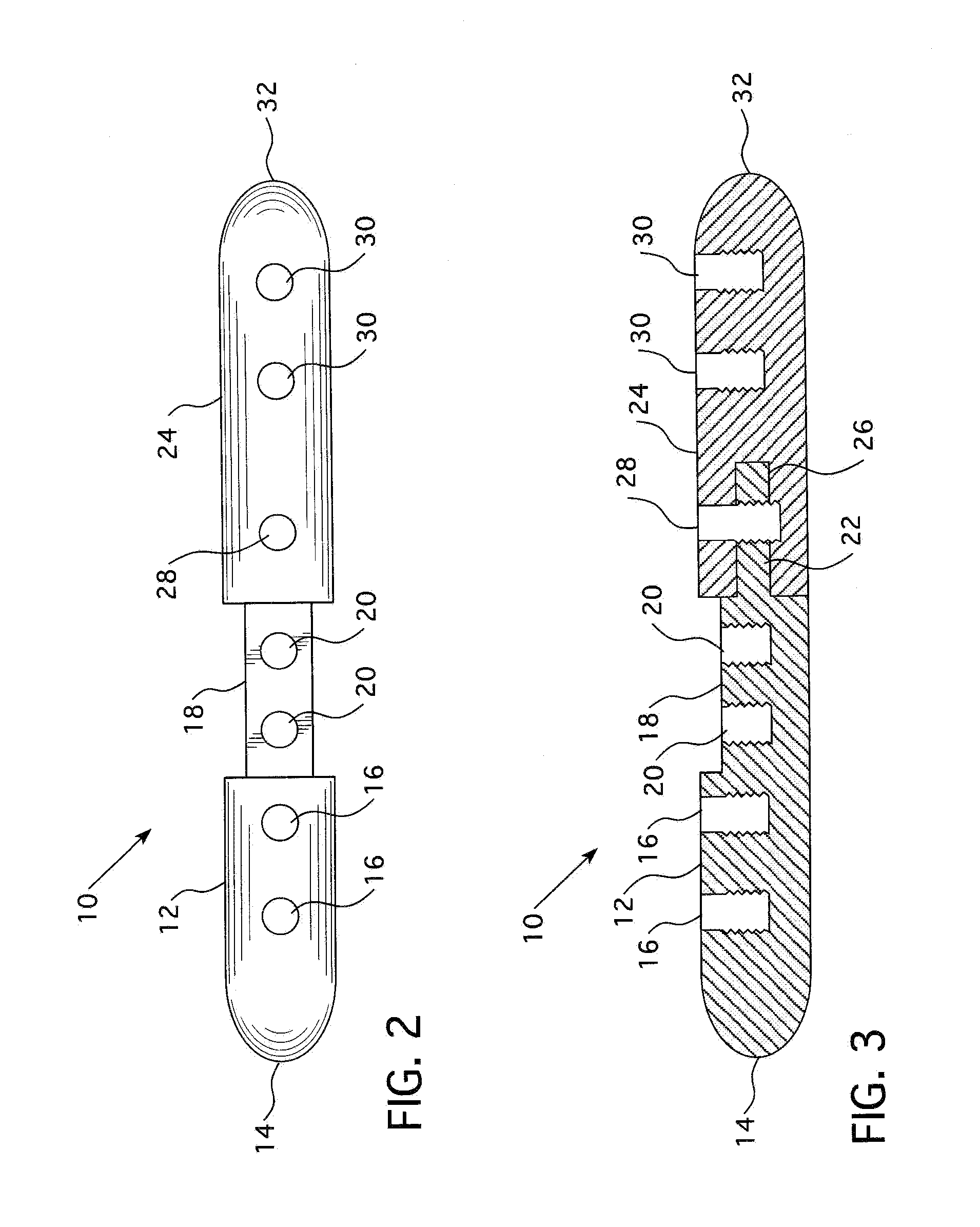Intramedullary Nail
a technology of intramedullary nail and proximal ulna, which is applied in the field of intramedullary nail, can solve the problems of instability of the proximal ulna stump and complicated surgical implantation, and achieve the effect of improving the range of motion and restoring the range of motion
- Summary
- Abstract
- Description
- Claims
- Application Information
AI Technical Summary
Benefits of technology
Problems solved by technology
Method used
Image
Examples
Embodiment Construction
[0013]The present invention is a versatile intramedullary nail constructed in one piece or in two cooperating and optionally interlocking pieces, with a further optional truncated annular restoration hub. The two cooperating pieces, when interlocked, approximate a long shaft, generally tubular in cross-section, with a recessed area on the male piece adapted to receive the truncated annular restoration hub. The female piece is adapted to receive the flange of the male piece coaxially, and—unless a locking screw or bolt is inserted through the flange—the two pieces can rotate axially and independently of each other. (Alternatively, the aforesaid nail structures can be manufactured as a single piece and, in such case, no interior rotation will take place.) Bolt or screw holes near the ends of either piece allow selective anchoring of either or both pieces to the adjacent intramedullary bone. When both pieces of the nail are anchored (via bolt or screw) to the adjacent bone, the two pie...
PUM
 Login to View More
Login to View More Abstract
Description
Claims
Application Information
 Login to View More
Login to View More - R&D
- Intellectual Property
- Life Sciences
- Materials
- Tech Scout
- Unparalleled Data Quality
- Higher Quality Content
- 60% Fewer Hallucinations
Browse by: Latest US Patents, China's latest patents, Technical Efficacy Thesaurus, Application Domain, Technology Topic, Popular Technical Reports.
© 2025 PatSnap. All rights reserved.Legal|Privacy policy|Modern Slavery Act Transparency Statement|Sitemap|About US| Contact US: help@patsnap.com



